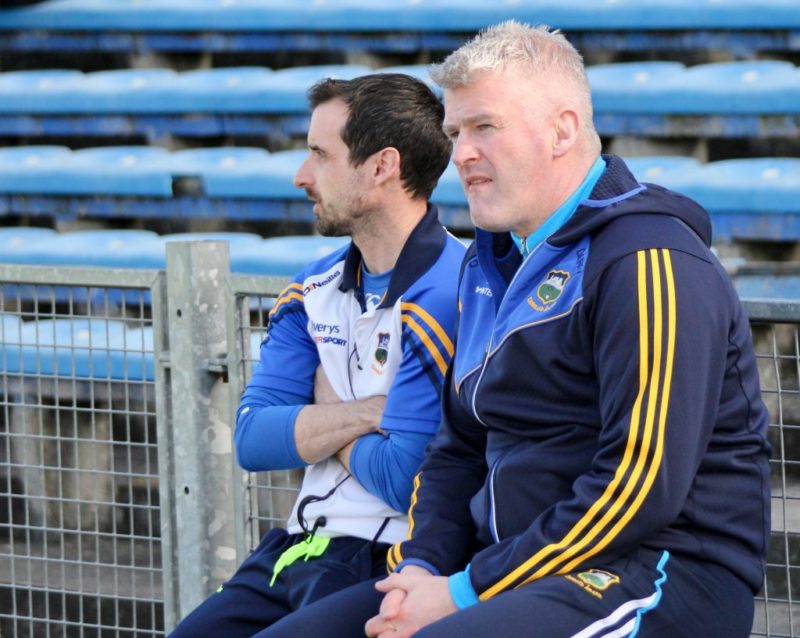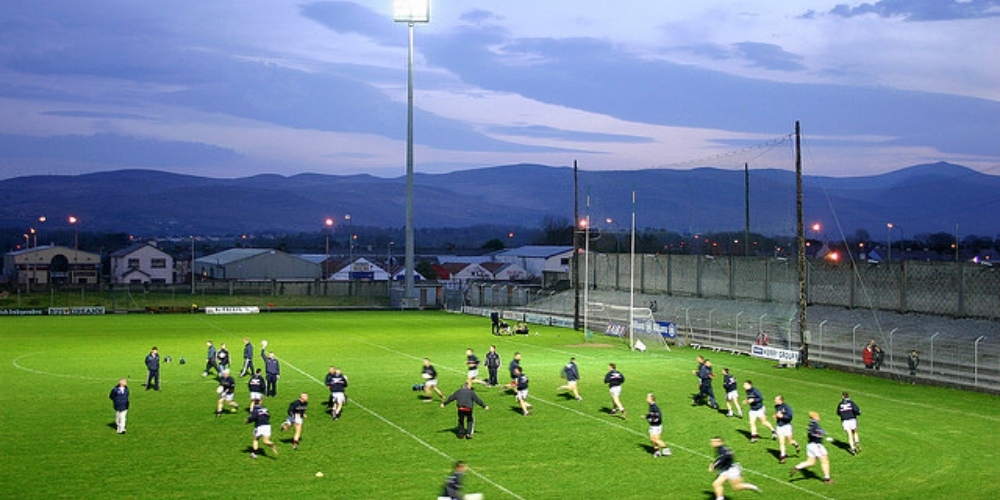Do the expectations of the role of a strength and conditioning coach differ on what title they are given? Setanta tutor, David Moriarty, draws on his own experience as an S&C coach with the Limerick Footballers and Hurlers, Tipperary Footballers and currently Laois Hurlers as he discusses what he believes to be a winning training approach.
There are so many new terms being conjured up as a title for what we do, the most recent title I’ve heard is ‘athletic development manager’ but, I like to keep it more basic. I call myself a physical trainer/coach. I firmly believe the role of a physical fitness coach/trainer is somewhat three-fold or as I put it, the 3 P’s of being a successful trainer.
They are as follows:
1. Prevention
2. Practice
3. Promotion
Let’s explore these a little further, and I’ll explain why I think they are imperative to a coach/trainer role.
Prevention relates to the prevention of injury to players in both gameplay and training. It is our responsibility to ensure the exercises and drills that we have the players complete is not putting them at undue risk of injury.
Practice means to practice the fundamentals of movement on a continuous basis. These are the foundations for every game related movement, and it is important that players become flawless in their execution.

David Moriarty with Shane Stapleton, during his time as Tipperary S&C coach.
Promote refers to the promotion of athletic development of our players. With that said we are frequently unfairly judged on how we improve the athletic capacity of our players and how they perform on the field/court or track. All sports are a results-based business and if our players are not somewhat successful, we often pay the price.
Like all other members of a management team, we as strength and conditioning coaches are often judged on results. Players will often buy into the importance of developing match fitness whilst forgetting about the two other primary roles in injury prevention and fundamental basic movement progression. Having said that, assisting the player to meet the demand of the game is a basic requirement in our role as an S&C coach and it is my view that how better to achieve that than utilising game-related activities and exercises under high intensity.
There has been a sea of change in the area of fitness, strength training and conditioning for team sports over the past 20 years. Certain training methods have come into vogue and soon afterwards have lost their relevance as a new method of training is believed to be the new best thing for our players. With this in mind, I quote a line I’ve heard from Dr Liam Hennessy, “Methods are many principles are few, methods often change but principles rarely do”.
Once a trainer works within the principles of training, they should attain progression with their players or athletes in the components of fitness. More and more emphasis is being placed on strength and conditioning for players nowadays in order to make athletes more robust, resilient and be able to meet the increasing demands of their particular sport.
With respect to on-field conditioning especially during the pre-season phase, the emphasis on building a conditioning base through a mixture of endurance, speed endurance and speed repeatability drills. These are often a separate entity to the training/coaching session. However, I firmly believe that once the foundations are laid and techniques are solid, one may integrate this conditioning into sports specific movements skills and drills. The days where conditioning is a separate portion within the training session are slowly declining, the marriage and development of skill development and conditioning create the best results.
Whilst most of my experience is in hurling and Gaelic football, I see in the last number of years a general increase in the use of small sided games in team sports. These games are very sports specific, normally played in smaller areas than a pitch, with different conditions or rules. They are mainly used to practice skill execution under the conditions and pressures of real-time games.

David’s past team, Limerick take on his current cohort, Laois in the Allianz Hurling League quarter final. Photo: Limerick Leader
From a fitness perspective, I also use small sided and modified games, but I refer to them as conditioning games. These are games where the skills of the match are executed and practised under a very high level of intensity with the effort/work rate at maximum degrees. The level of conditioning required to play inter-county Gaelic Games in the present era is higher than it ever has been, but it is not just the amount of speed or distance covered in a game that is relevant, it is also the level of conditioning required to break a tackle or number of tackles or on the opposite side of the coin, the fitness to track, tackle and get a turnover of ball from an opponent.
I see a great progression of fitness levels when using these types of games in the conditioning portion of the session. One can easily manipulate the rules and parameters of the game to place emphasis different types of conditioning, be it either defence tackling conditioning or offence breaking the line play. The emphasis for me as the S&C coach is the level of conditioning and work that the players are completing in this modified game whilst the emphasis for the sports coach is the proper execution of the skills under match situation pressure. I am very cognisant of the fact that in order to utilise these types of games, skills must be learned and developed to a high standard.
However, when using these methods of training one must emphasise the completion of these skills at high intensity and under fatigue, how better to achieve this than through these types of games. I use an old adage saying, “You train slow you play slow. You train fast you play fast” or “You train as you play, you play as you train”. Put simply, you must replicate the conditions of match situations in order that your players meet these demands, be it skill execution, pressure of time and opponents but also fatigues levels.
Obviously, there are many occasions where an S&C coach must separate certain aspects of fitness, be it acceleration or plyometric power, this cannot be practised or progressed in match conditions. For example, if one wants to improve unprogrammed change of direction, in my view there is no better way than to use match conditions to improve these components of fitness.
In the words of a good friend and mentor of mine, “you get better bang for your buck” [in terms of utilising conditioning games in your sessions] in that you are achieving the desired conditioning in the session and the players are practising and executing the skills used in their sports under fatiguing circumstances. There are many of you who may disagree with me, I can respect that, but I am just outlining a training approach that has worked for me in the past and give ideas to current coaches on the field.
Learn more about the courses available at Setanta College here, or contact a member of our team below.



Leave A Comment